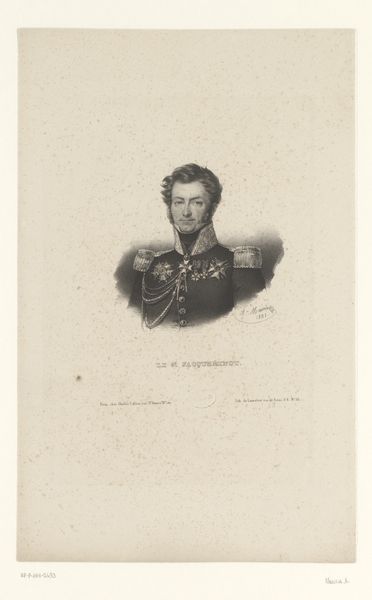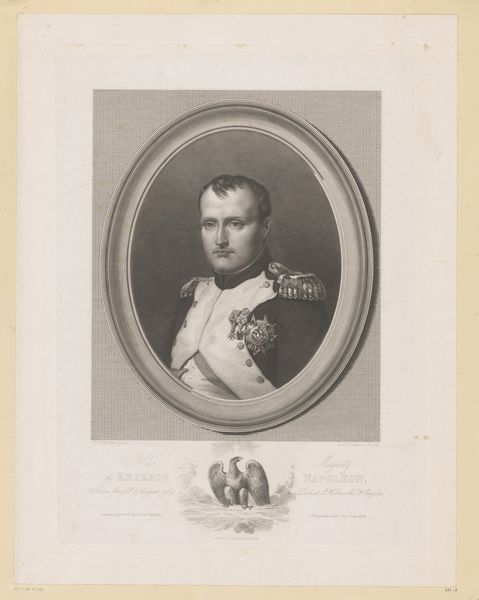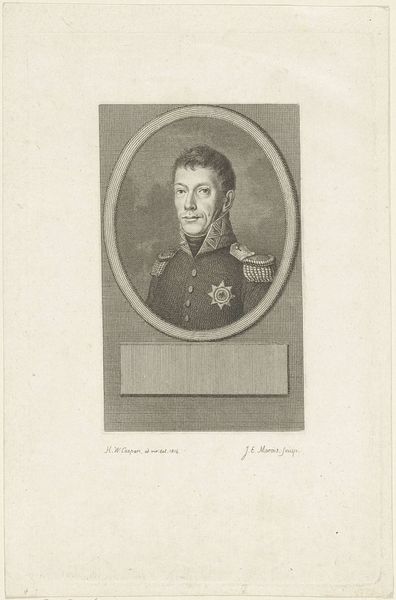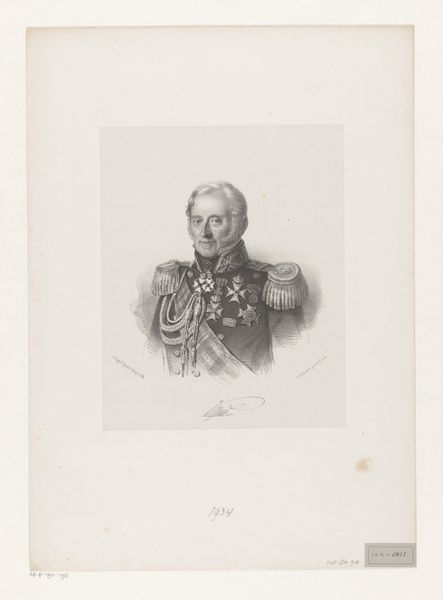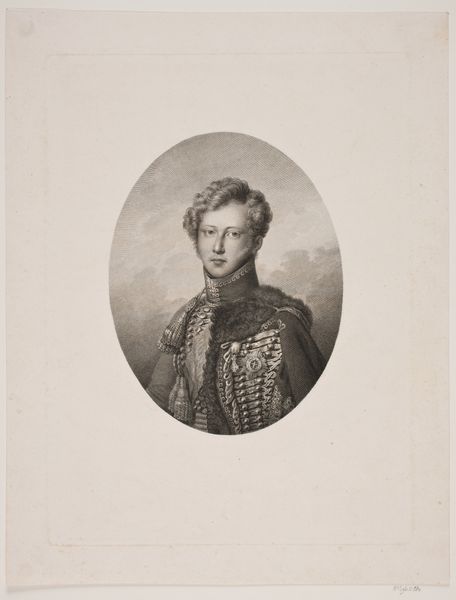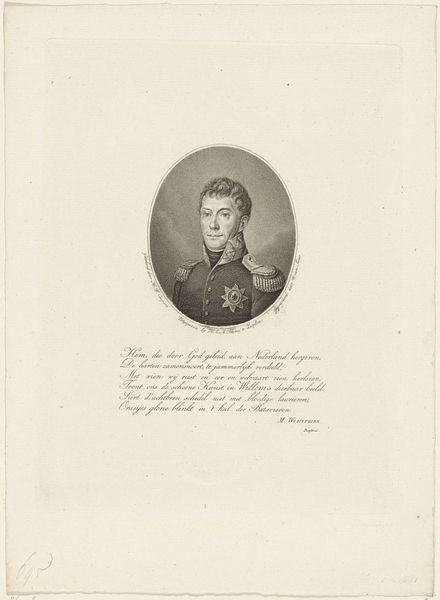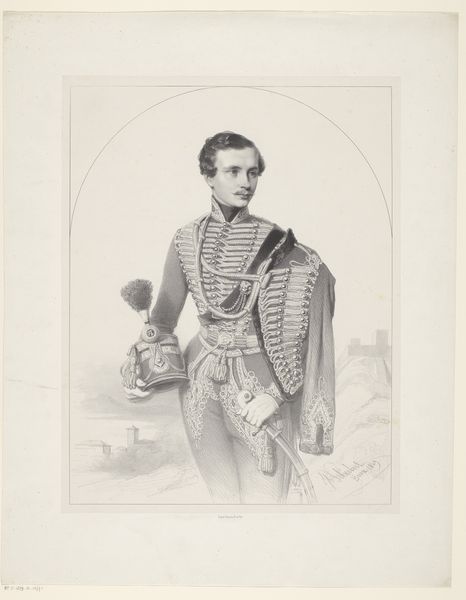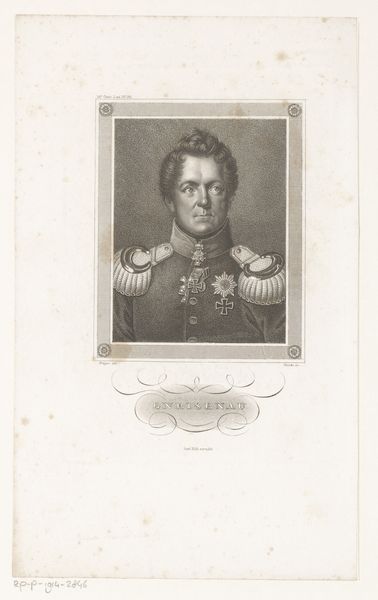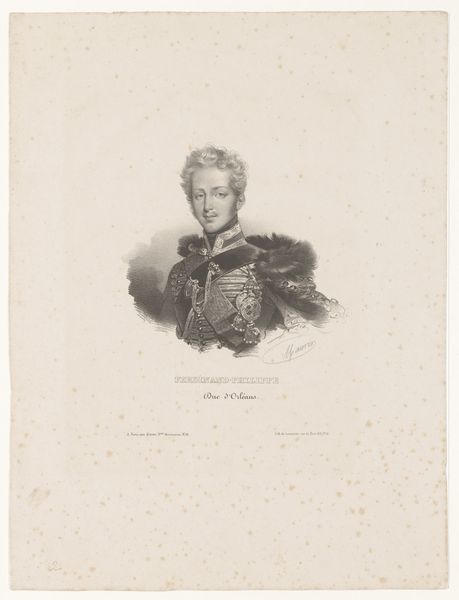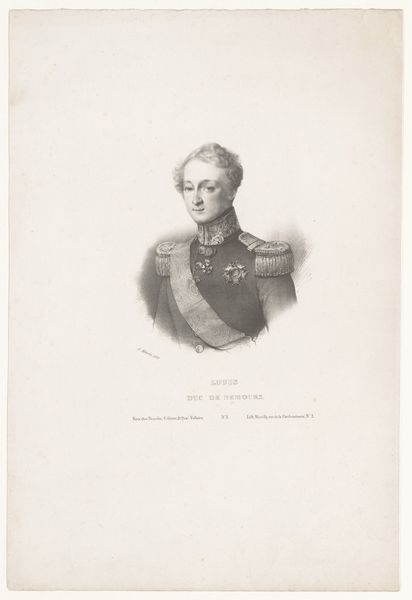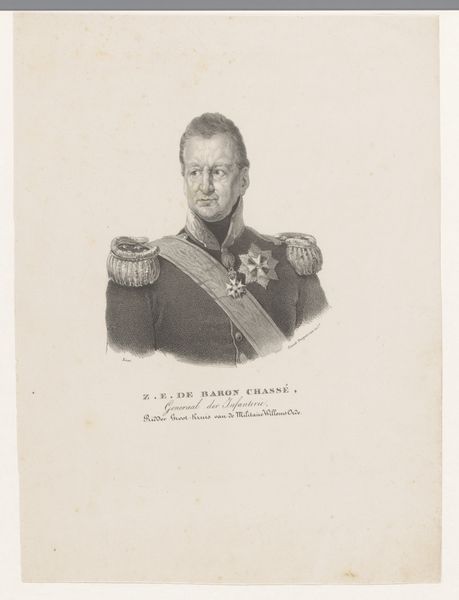
print, engraving
#
portrait
#
neoclacissism
#
16_19th-century
# print
#
old engraving style
#
archive photography
#
historical photography
#
19th century
#
academic-art
#
engraving
Dimensions: height 510 mm, width 338 mm
Copyright: Rijks Museum: Open Domain
Curator: This is a portrait of Johannes van den Bosch, an engraving created between 1844 and 1853 by Franciscus Bernardus Waanders. It's currently held here at the Rijksmuseum. Editor: It has a very formal air about it. Almost austere, yet the fine details in the engraving give it a sense of controlled elegance. I immediately notice the contrast between his almost severe expression and the ornate decorations of his uniform. Curator: Yes, the formal pose and neoclassical style speak to the period's emphasis on order and reason, and portray the sitter as an important man of the time. The rendering in print aligns well with that goal. Waanders produced this at a time when Van den Bosch was a well known politician in the Netherlands, responsible for administering the Dutch colonies. Editor: And the medals, the sash... It all signifies power and status, right? This imagery, in light of contemporary discussions around colonialism, provokes a very different reaction today, compared to its original context. We must remember that a portrayal such as this served specific purposes that have lasting impacts on the social order and national memory. Curator: Indeed. These portraits weren't just likenesses; they actively participated in shaping public perception and upholding particular narratives. They were potent forms of visual propaganda. And this work is not simply a depiction; it is very much an artifact, a visual record that reminds us that in its time it advanced specific socio-political projects. Editor: So we can unpack this not only as a historical depiction of a man, but as an embodiment of broader systems of power and privilege from that era? I think encouraging viewers to examine those dynamics is crucial when encountering artworks like this. Curator: Precisely. It invites us to look critically at the systems represented and ask what was advanced, and who or what was excluded, in the making of the work and its cultural function at the time and since. Editor: The level of detail in Waanders' engraving offers a striking level of realism and invites viewers to ponder questions related to governance, class, and representation. Curator: Looking at art in the collection requires contextual analysis, and it offers opportunities to examine art history with a sharp and relevant critical eye.
Comments
No comments
Be the first to comment and join the conversation on the ultimate creative platform.

